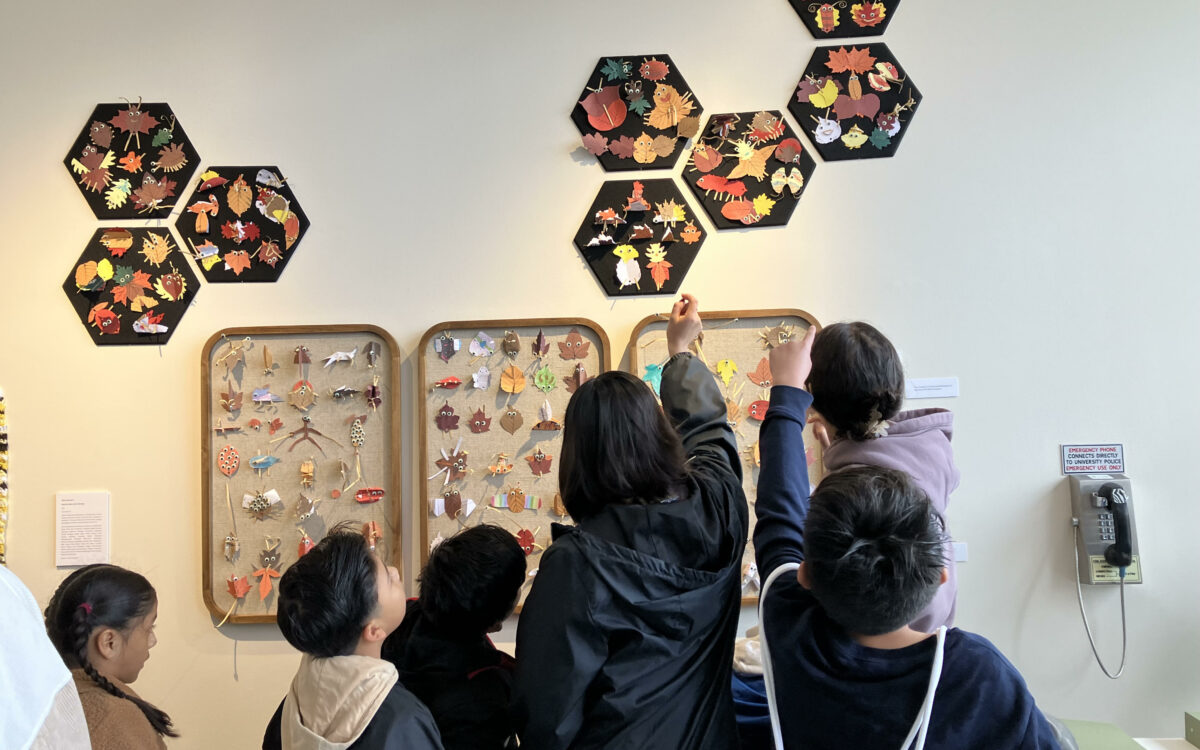In response to California’s long-standing teacher shortage, the state has been investing in recruitment efforts such as internships, apprenticeships and residencies, all designed to attract new teachers to the profession. Now, in light of the thousands of jobs being generated by Proposition 28, many arts education advocates are aspiring to lean into the same strategies, looking to create more alternate pathways into arts education at the TK-12 level.
Teacher residencies are one such route. Part of the “earn-and-learn” model, these positions offer on-the-job training as well as mentorship that often appeals to candidates who may not be able to afford to enter a conventional teacher-preparation program. That may help diversify the ranks.
Merryl Goldberg, a veteran music and arts professor at Cal State San Marcos, is helping develop a residency program that would meet the needs of her arts education students, most of whom are the first in their families to go to college. Without paid learning opportunities, becoming an arts teacher can be a hard path to walk, she says, because it means giving up much-needed income for years.
“This can be a game changer for many students,” said Goldberg, who has plans to partner with several North County San Diego schools in the next school year.
“Many of our [college] students have to work while in school to support themselves and contribute to their family. … Imagine that their work is their school, how much more time and energy they can put into becoming an amazing teacher.”
Jacquelyn Ollison, program director of the California Teacher Residency Lab, points out that residency programs can help boost diversity, recruiting teachers who reflect the students they serve. Residents often teach alongside a mentor teacher for a year of clinical training even as they complete required coursework in a teacher preparation program.
“From an equity perspective, residency programs are just so amazing,” Ollison said. “You have funding to diversify the workforce, to recruit and retain candidates of color, who reflect what our student population is. Then, when you think about art and who has access to amazing art teachers and who doesn’t, this is a way to ensure that we’re having these art teachers come in really prepared, reflecting local diversity and kids getting the opportunity to benefit from it.”

Eric Engdahl, professor emeritus at CSU East Bay and past president of the California Council on Teacher Education, is among those working on plans for how best to extend these programs into the arts ed space, but he cautions that institutional change is rarely swift.
“I think it will be a very important venue to expand Prop. 28 and get teachers in the pipeline, but it is complicated, as are all things in education,” said Engdahl, who spearheaded an online credential program in theater and dance at Cal State East Bay in 2021, making it the first CSU to offer those credentials amid the implementation of Proposition 28, “and may take time to make any real impact.”
However, a sense of urgency is part of this vision for nurturing a generation of teachers who better connect with the students they teach in this deeply diverse state.
“This impacts not only the students by giving them the time to really engage with learning, but benefits their future students as their time is really focused on their studies to become a reflective, thoughtful and engaged teacher,” Goldberg said. “The population of the students we reach, no doubt, is the very population of students who have less opportunities and privileges. The students we are targeting mirror the population of the students they will go on to educate.”
Research has long shown that the benefits of the arts are rich and nuanced, from boosting social-emotional learning to supporting literacy and numeracy. And yet, until Proposition 28, it’s been the least privileged students, the ones most hurt by school closures and learning loss during the pandemic, who have also been the least likely to have access to the arts.
“We know that the arts are powerful for students and self-expression, and they have tremendous benefits at school,” said State Superintendent of Public Instruction Tony Thurmond.
“Arts is something that everyone should have, regardless of your neighborhood or your ZIP code. And Prop. 28 guarantees that with equity, all students have access to arts.”
In an era of chronic absenteeism, student disengagement and a youth mental health crisis, many are hopeful that arts education may be a key way to bring magic back into the classroom at a time when many children have zoned out.
“From my perspective, we are all dealing with trauma at some level in our schools today,” said Peggy Burt, a statewide arts education consultant based in Los Angeles. “The pandemic created this new era of ‘learning loss’ that is driving both teachers and students to make up for lost time. As students hurry to catch up, they are experiencing a sense of overwhelm and disconnection. The arts, coupled with social-emotional learning, can be a path back to integration and belonging. … The arts create a culture and environment where students can thrive.”
The arts can be a powerful way to let students explore their darker feelings and turn those emotions into something beautiful.
“While so many of our students are struggling with anxiety and depression, theater, in my opinion, is one of the best forms of therapy,” said Catherine Borek, AP English literature and drama teacher at Dominguez High School in the Compton Unified School District. “We expose them to good stress, and we help them strengthen their wings so that they can fly. That is the power of the arts.”
